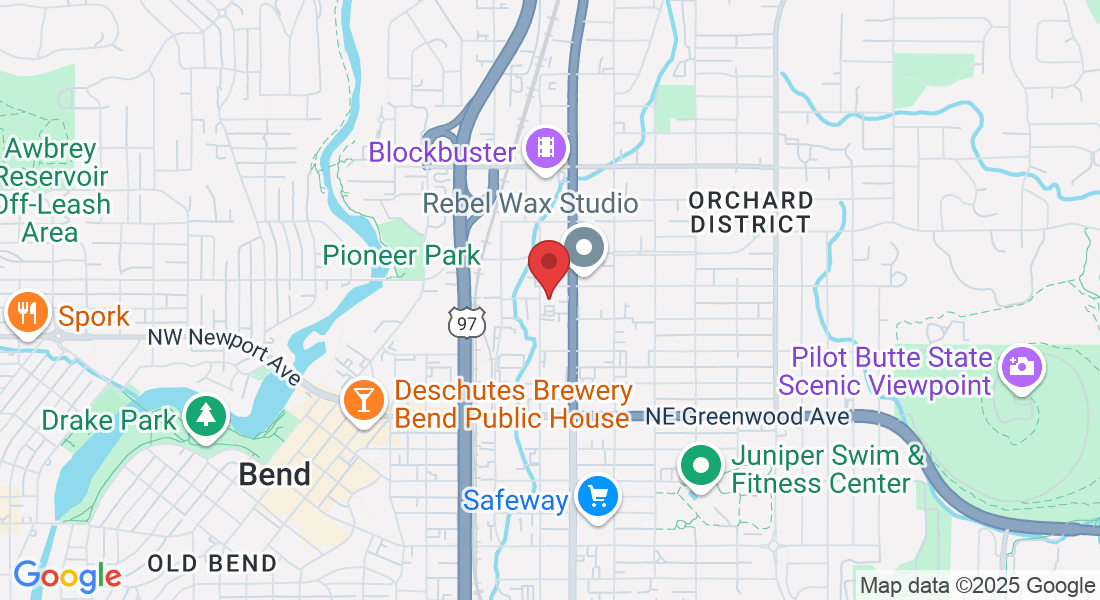Shoulder Pain Relief
Rediscover Life Without Shoulder Pain
Renowned as a marvel of human anatomy, the shoulder joint offers unparalleled mobility and flexibility, enabling us to perform a myriad of tasks, from reaching out for a book on the top shelf to throwing the perfect spiral with a football. Yet, this exceptional range of motion comes at a price. Over time, instability or impingement of the soft tissues or bony structures in your shoulder may cause discomfort and pain. This pain might be transient or persisting, may manifest only when you move, or may be a constant presence, prompting the need for professional intervention.
We're pleased to share that minor shoulder pain frequently shows a promising response to strategies such as physical therapy, the use of shoulder supports, upholding a healthy lifestyle, all of which can bring about substantial relief. Here at PhysioFit, we comprehend that each person's journey to a pain-free life is distinct. We're dedicated to delivering personalized, science-backed treatments with a fitness-centric approach to effectively ease your shoulder discomfort, helping you return to your everyday activities.
What You Should Know
The human body's most versatile joint, the shoulder, owes its expansive motion range to a quartet of muscles and their corresponding tendons, collectively known as the rotator cuff.
Intriguingly, shoulder pain may sometimes be a symptom of an issue originating from another part of the body, such as the neck or lungs. This phenomenon, known as referred pain, typically presents as a persistent ache that doesn't worsen with shoulder movement.
Shoulder discomfort or pain can result from inflammation, injury, or bone alterations surrounding the rotator cuff.
A proper diagnosis of a shoulder problem involves a thorough evaluation from a professional

Understanding the Common Causes of Shoulder Pain
The shoulder is a complex joint, and it's susceptible to a variety of injuries and conditions. Here are some of the most common causes of shoulder pain:
Dislocation: This happens when the top of your arm is pulled back excessively or rotated too far, causing it to pop out of its socket. Symptoms include pain, weakness, swelling, numbness, and bruising in the shoulder.
Separation: This injury affects the acromioclavicular (AC) joint, where the collarbone and shoulder blade meet. A hard blow or fall can tear the ligaments, leading to a visible bump on top of your shoulder due to a displaced collarbone.
Fracture: A fall or severe blow can result in a broken or cracked bone. The clavicle (collarbone) and humerus (upper arm bone) are most prone to fractures, leading to intense pain, bruising, and restricted movement.
Cartilage Tear: Repeated motion, a fall, or a significant force can damage the cartilage that cushions your shoulder joint. Symptoms include pain during overhead reach, shoulder weakness, and a sensation of catching, locking, or grinding.
Rotator Cuff Tear: The group of muscles and tendons comprising your rotator cuff secure your arm in place and enable overhead lifting. Overuse, falls, or natural aging can cause damage, leading to pain (particularly at night), reduced lifting ability, and a crackling sound during movement.
Frozen Shoulder: Characterized by restricted joint movement, this condition is caused by the build-up of abnormal tissue bands (adhesions) within the joint, often following pain or surgery-induced disuse.
Impingement: This occurs when the tendons of the rotator cuff are pinched between the shoulder bones, causing pain and swelling, particularly in individuals who frequently lift their arms overhead.
Bursitis: Overuse, repetitive motions, or an injury can inflame the bursa (a fluid-filled sac that cushions the joint), leading to pain, especially during shoulder movement.
Apart from these, other potential causes of shoulder pain include: Osteoarthritis, Rheumatoid arthritis, Heart attack, Bone Spurs, Referred pain, and Tendinitis.
Remember, if you resonate with any of the symptoms or conditions mentioned, we highly recommend making an appointment with us for a thorough evaluation and personalized treatment plan.
Preventive Measures for Shoulder Pain
The bright side of shoulder issues is that they can often be resolved without resorting to surgery. However, prevention is always better than cure, and here are some ways you can safeguard your shoulders.
Heed Your Body's Signals: Do not dismiss shoulder discomfort that follows any activity. If the pain is intense and persistent, consult your doctor. Remember, enduring unnecessary pain might only exacerbate the situation.
Maintain Overall Health: Stay in prime physical condition with regular exercise and a balanced diet. It's not just a ticket to overall wellness, but it also helps in warding off potential injuries.
Adopt Correct Exercise Habits: Ensure a proper warm-up before your workouts. Gradually ease into a sport or activity if you've been inactive for a while. Learn and adhere to the correct techniques of weight lifting, and avoid lifting beyond your capacity.
Stay Safe at Work: Be conscious of your shoulder health in your work environment -
Prioritize good posture, whether you're sitting or standing.
Follow safe lifting practices. Maintain a straight back and leverage your leg strength.
Every hour, take a few minutes to move around and stretch.
If your job involves a desk, ensure your workstation is ergonomically set up for comfortable computer use.
Avoid Overreaching: When you need to access high places, use a step stool. Arrange frequently used items within easy reach, in lower drawers or shelves.
Remember, caring for your shoulder health can keep you active and pain-free in the long run.
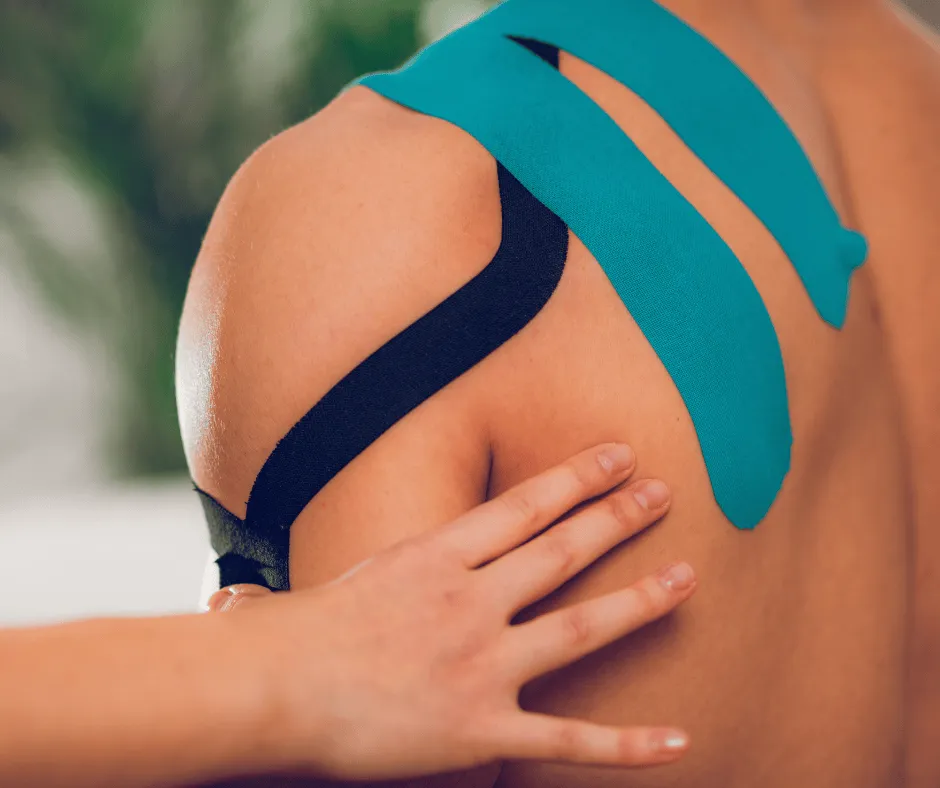
Common Symptoms of Shoulder Pain
Heat or a reddened appearance in your shoulder
Restricted arm mobility
Stiffness and reduced strength in your muscles
A sensation of clicking, popping, or grinding during arm movements
Discomfort in your neck, arm, or back
Remember, if you resonate with any of the symptoms or conditions mentioned, we highly recommend making an appointment with us for a thorough evaluation and personalized treatment plan.
Please Note: The information provided on our website is intended for general education and is not a substitute for professional medical advice. Each individual's situation and body is different. Therefore, what may work for one person may not work for another. We care about your well-being and advise you to reach out to us to discuss your specific needs before implementing any advice from our website.
Your Source for All Things Physical Therapy in Bend Oregon
The PhysioBlog
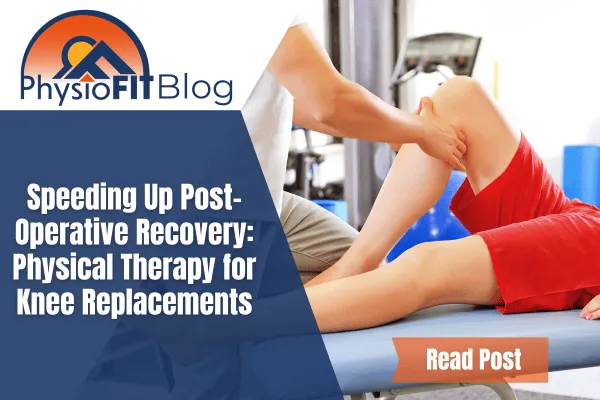
Speeding Up Post-Operative Recovery: Physical Therapy for Knee Replacements
Introduction
When knee pain dominates your life, knee replacement surgery can be a last resort when seeking relief. But, let's not forget - the journey doesn't stop at the operating room. Indeed, it extends further, with successful recovery hinged on a robust rehabilitation plan. With decades of experience, we at PhysioFIT understand this journey inside and out. We offer custom-tailored physical therapy that is designed to expedite your recovery and get you back on your feet—literally.
Why Physical Therapy is Essential After Knee Replacement
Physical therapy is the backbone of recovery, post-knee replacement. It's the catalyst that drives knee mobility, muscle strength, and most importantly functionality. Moreover, it acts as the key to unlocking your routine activities sooner, and with less discomfort. You might be wondering, "How can I speed up my recovery after knee replacement?" The answer lies in a well-structured, professionally guided physiotherapy program. And at PhysioFIT, that’s exactly what we do to help you rebound quickly and bounce back better than ever.
Unraveling the Complexities of Knee Replacement Surgery
Before we dive into the recovery, let's take a quick look at what exactly happens during a knee replacement surgery:
Knee Replacement Surgery: An Inside Look
Also known as a total knee arthroplasty (TKA), knee replacement surgery involves replacing damaged parts of your knee with medical grade hardware designed to mimic your natural architecture. A surgeon’s go to for individuals with severe knee damage that disrupts daily activities. A procedure that can be a game-changer for those that truly need it.
The Initial Stages of Post-Operative Care
When the surgery is complete, the initial focus shifts to healing the wound, managing pain, and preventing any post-operative complications. Once these initial concerns are put to rest, the spotlight moves to rehabilitation and, our main protagonist, physical therapy.
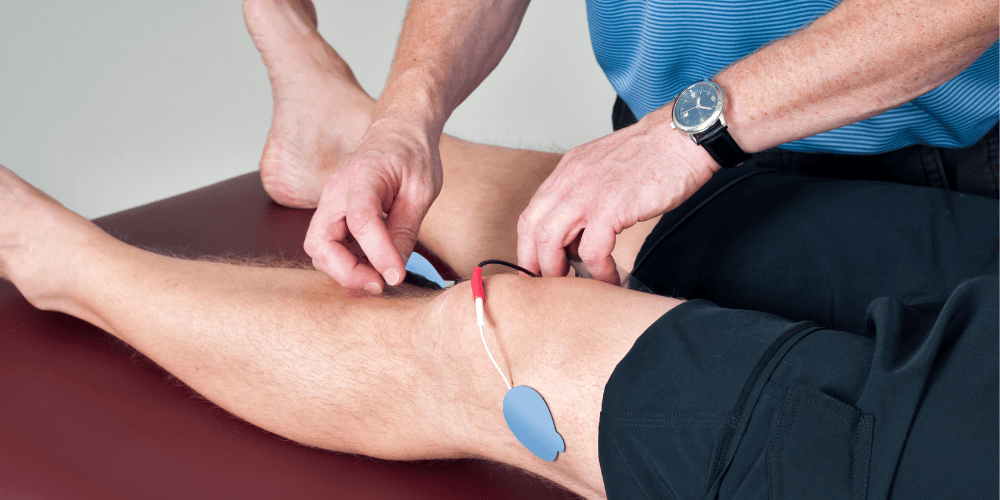
How Does a Physical Therapist Aid in Recovery?
The story of recovery is told in two parts: Pre-surgery and post-surgery physiotherapy.
Prepping Up with Pre-Surgical Physical Therapy
Before you even set foot in the operating room, physiotherapy starts preparing your body for what's to come. It involves strengthening the muscles around your knee and boosting your overall fitness. This pre-operative “warm-up” acts as a solid foundation for a smoother recovery process. Essentially, the more robust base we can build before surgery, the more buffer you have for the inevitable losses that come with any surgery.
The Post-Surgery Physical Therapy Journey
After the surgery, physical therapy takes center stage in your recovery. From regaining your knee's full range of motion to early loading and strengthening of muscles and restoring normal movement patterns, physiotherapy plays a pivotal role in your recovery. You may ask, "How many times a day will I have to go to physical therapy after knee replacement?" It's important to remember that each patient's needs are unique, and your physiotherapist will recommend a frequency that best fits your recovery plan.
Physical Therapy Techniques to Fast-Track Knee Replacement Recovery
Please Note: The information provided within this article is intended for general education and is not a substitute for professional medical advice. Each individual's situation and body are different. Therefore, what may work for one person may not work for another. We care about your well-being and advise you to reach out to us to discuss your specific needs before implementing any advice from our website.
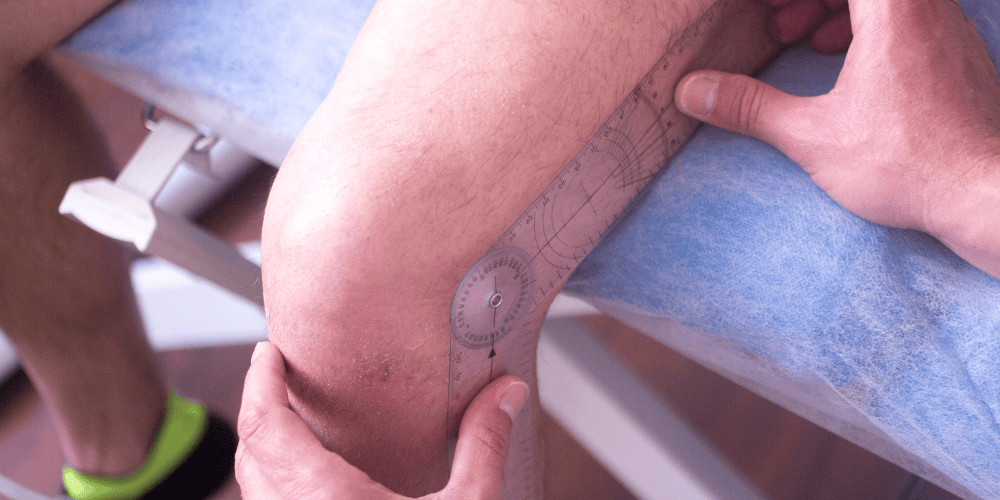
Aggressive Restoration of Range of Motion
Stretching, exercise, and soft tissue mobilization work are the first stepping-stone to restoring the necessary movement in your knee. There is a finite time in the healing process where range of motion must be regained or it may be lost forever. Finding a therapist that knows when and how to push you to make the gains necessary and in the appropriate time is key to maximizing all the good work your surgeon did.
Strengthening Exercises for Knee Support
The muscles supporting your knee need to regain their strength, and this is where strengthening exercises come into play. These exercises aim to stabilize the knee joint and promote improved movement, helping your knee get its groove back. It all comes down to gaining functional strength, that being, the ability to be stable and confident in your knee so you can get back to what's important to you.
Improving Balance and Control
To walk, run, or dance, you need balance and coordination, and these exercises aim to bring that back. They are crucial for regaining your daily life activities post-surgery. These are the pillars of your recovery that we as your physical therapist will focus on.
How PhysioFIT Can Facilitate Your Recovery
Personalized Physical Therapy Sessions
At PhysioFIT, we understand that each patient is unique and that no two knees are the same. More important than that, we appreciate that you are more than just a knee. You are a whole person with thoughts, feelings, dreams, and fears and we work to address all these things to truly center your care around YOU. We tailor our physiotherapy sessions according to your specific needs. Our team of expert physical therapists in Bend will assess your mental, physical and emotional condition, understand your goals, and design a unique recovery program that speeds up your journey.
Utilizing Best Practice While Mastering The Fundamentals
In this era of rapid technological advancement, we leave no stone unturned to incorporate the best therapy techniques while still doing the basics exceptionally well. This includes manual therapy, time tested therapeutic exercises, and compassionate patient education. Our objective is to ensure you are well-informed about your recovery process and feel empowered to actively participate in it.
The Extra Mile: Home Exercise Programs
Along with our physical therapy sessions, we provide home exercise programs that you can carry out at your convenience. These exercises complement your in-clinic therapy, helping to maintain continuity in your recovery process. As your physical therapist, our goal here is to make sure you're actively involved in your rehabilitation every day, even when you're not in the clinic. Taking agency over your health is vital to us. We don't aim to “make you better”, we want to empower you and give you the tools to get you to where you want to be.
Answering the Question: Can You Overdo Physical Therapy?
While physical therapy is essential to recovery, you might wonder, "Can you do too much physical therapy after knee replacement?" The answer is yes. Overdoing physical therapy can lead to exhaustion and could potentially slow down recovery. Remember, recovery is not a race; it's a marathon. The goal is not to rush but to ensure steady, consistent progress.
Conclusion
Knee replacement surgery, for those that need it, can be an avenue to a life free of chronic knee pain. However, the surgery is just the first step. The true journey begins after the operation with a comprehensive rehabilitation plan. Physical Therapy is the cornerstone of this journey, offering an effective way to speed up recovery, regain mobility, and reclaim your life.
As professional physical therapists in Bend, with years of experience, we can't emphasize enough the importance of a high quality physical therapy program. From pre-surgical preparation to post-operative exercises, every stage of the journey is crucial. Here at PhysioFIT, we understand this journey and are committed to providing personalized, top-notch physical therapy to guide you through your recovery.
Remember, the path to recovery will have its ups and downs, but with dedication, patience, and the right guidance, a pain-free life is within your reach. If you are preparing for a full knee replacement surgery, reach out to us here at PhysioFIT and we can help guide you through this journey: www.PhysioFITBend.com
Frequently Asked Questions (FAQs)
How can I speed up my recovery after knee replacement?
A: A well-structured, professionally guided physiotherapy program can significantly speed up recovery. This should include pre-surgical and post-surgical exercises, along with a good home exercise program.
What is the average time for PT after knee replacement?
A: The duration of PT after knee replacement varies depending on the individual's progress, but typically, a course of 6-12 weeks is common.
Can you do too much physical therapy after knee replacement?
A: Yes, overdoing physical therapy can lead to exhaustion and could potentially slow down recovery. It's essential to follow a balanced and sustainable routine under the guidance of a professional physical therapist in Bend.
How many times a day should I do physical therapy after knee replacement?
A: The frequency of physical therapy sessions depends on the individual's specific needs and recovery progress. Your physiotherapist will recommend a frequency that suits you best.
How can PhysioFIT help me with my recovery after knee replacement surgery?
A: At PhysioFIT, we offer personalized physical therapy sessions tailored to your specific needs. We utilize advanced therapy techniques, provide home exercise programs, and educate patients about their recovery, contributing to a faster, smoother rehabilitation process. Reach out to us today for all your pre/post-operative knee surgery needs today: www.PhysioFITBend.com
Please Note:The information provided within this article is intended for general education and is not a substitute for professional medical advice. Each individual's situation and body are different. Therefore, what may work for one person may not work for another. We care about your well-being and advise you to reach out to us to discuss your specific needs before implementing any advice from our website.
Copyright PhysioFIT 2025 . All rights reserved


